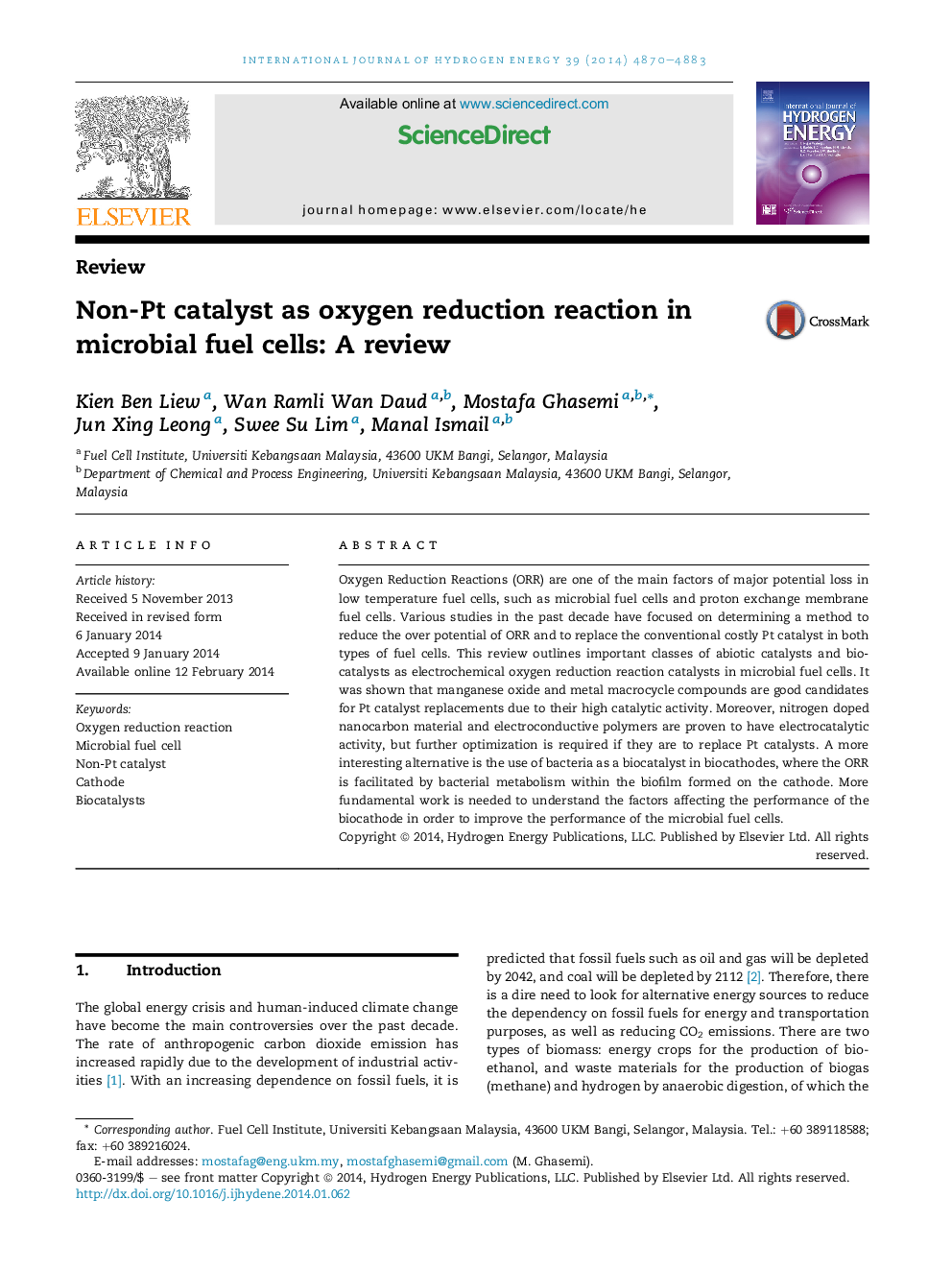| Article ID | Journal | Published Year | Pages | File Type |
|---|---|---|---|---|
| 1281254 | International Journal of Hydrogen Energy | 2014 | 14 Pages |
•Reviewing about MFC and parameters affecting the power generation of MFC.•Understanding the importance of cathode catalyst in MFC's performance.•Introducing the latest catalysts used in MFC.
Oxygen Reduction Reactions (ORR) are one of the main factors of major potential loss in low temperature fuel cells, such as microbial fuel cells and proton exchange membrane fuel cells. Various studies in the past decade have focused on determining a method to reduce the over potential of ORR and to replace the conventional costly Pt catalyst in both types of fuel cells. This review outlines important classes of abiotic catalysts and biocatalysts as electrochemical oxygen reduction reaction catalysts in microbial fuel cells. It was shown that manganese oxide and metal macrocycle compounds are good candidates for Pt catalyst replacements due to their high catalytic activity. Moreover, nitrogen doped nanocarbon material and electroconductive polymers are proven to have electrocatalytic activity, but further optimization is required if they are to replace Pt catalysts. A more interesting alternative is the use of bacteria as a biocatalyst in biocathodes, where the ORR is facilitated by bacterial metabolism within the biofilm formed on the cathode. More fundamental work is needed to understand the factors affecting the performance of the biocathode in order to improve the performance of the microbial fuel cells.
